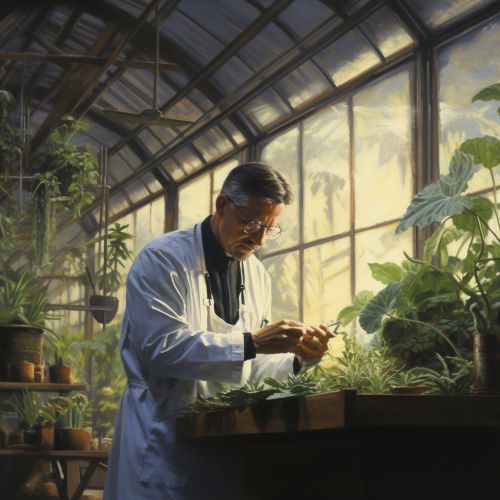The Science of Plant Pathogen Interactions and Disease Resistance
Introduction
Plant pathogen interactions and disease resistance is a complex and dynamic field of study within the broader discipline of plant pathology. This field focuses on the intricate relationships between plants and the pathogens that infect them, as well as the mechanisms that plants use to resist these infections. By understanding these interactions, scientists can develop strategies to improve plant health and productivity, and mitigate the impact of plant diseases on agriculture and ecosystems.
Plant Pathogens
Plant pathogens are microorganisms that cause diseases in plants. They include bacteria, fungi, viruses, and nematodes. These pathogens can cause a wide range of diseases, from leaf spots and wilts to root rots and cankers. The severity of these diseases can vary greatly, from minor cosmetic damage to complete plant death.


Plant-Pathogen Interactions
The interaction between a plant and a pathogen is a complex process that involves a series of steps. First, the pathogen must recognize the plant as a suitable host. This recognition is often mediated by specific molecules on the surface of the plant and the pathogen. Once the pathogen has recognized the plant, it must then penetrate the plant's physical barriers, such as the cuticle and cell wall. This penetration can be facilitated by mechanical force, enzymatic degradation of the plant's barriers, or the use of specialized structures called appressoria.
After penetration, the pathogen must establish itself within the plant tissue. This establishment often involves the secretion of effector proteins that manipulate the plant's cellular processes to the benefit of the pathogen. Finally, the pathogen must reproduce and spread to other parts of the plant or to other plants. This spread can occur through various mechanisms, including the movement of spores or the transmission of viruses by insect vectors.
Disease Resistance in Plants
Plants have evolved a variety of mechanisms to resist pathogen infection. These mechanisms can be broadly classified into two categories: passive and active resistance.
Passive resistance involves the physical and chemical barriers that prevent pathogen entry and establishment. These barriers include the cuticle, cell wall, and various antimicrobial compounds produced by the plant.
Active resistance, on the other hand, involves the plant's immune system. Plants have a two-tiered immune system composed of the pathogen-associated molecular pattern (PAMP)-triggered immunity (PTI) and the effector-triggered immunity (ETI). PTI is triggered by the recognition of general pathogen molecules, such as flagellin or chitin, and leads to a broad-spectrum defense response. ETI, on the other hand, is triggered by the recognition of specific pathogen effector proteins and leads to a more robust and specific defense response.
Strategies for Disease Resistance Breeding
Understanding the mechanisms of plant-pathogen interactions and disease resistance can inform strategies for disease resistance breeding. These strategies can involve the selection of plants with natural resistance to specific pathogens, the introduction of resistance genes from other plants through genetic engineering, or the manipulation of the plant's immune system to enhance its defense response.


Challenges and Future Directions
Despite the advances in our understanding of plant-pathogen interactions and disease resistance, there are still many challenges to overcome. These challenges include the rapid evolution of pathogens, the complexity of the plant immune system, and the environmental and ethical considerations associated with disease resistance breeding.
Future directions in this field may involve the use of advanced technologies, such as genomics and bioinformatics, to better understand the molecular basis of plant-pathogen interactions and disease resistance. Additionally, there is a growing interest in the use of sustainable and eco-friendly strategies for disease management, such as the use of beneficial microorganisms and the promotion of plant health through improved agricultural practices.
